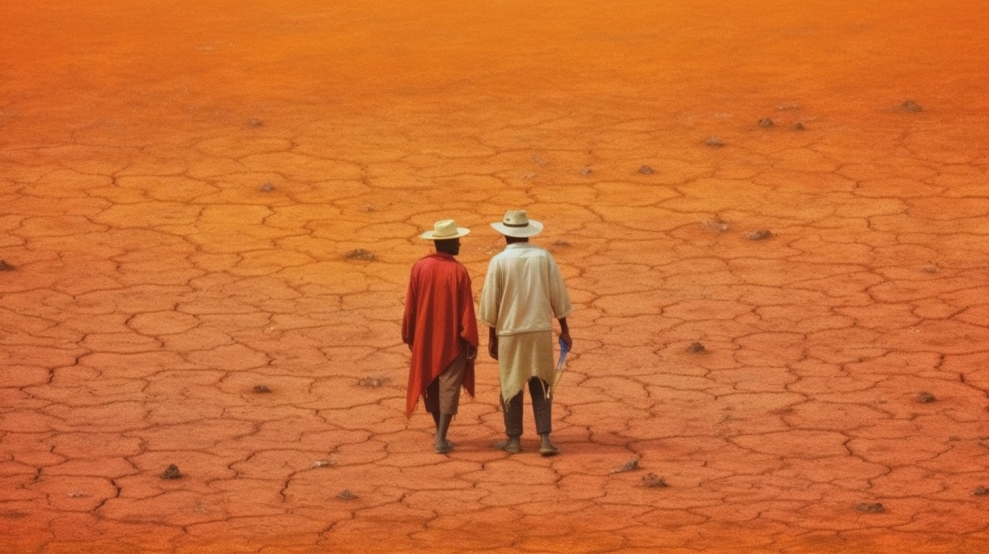
Droughts are prolonged periods of below-average rainfall that can have severe socio-economic and environmental impacts. South Africa, a country known for its diverse climate and water scarcity issues, has experienced numerous droughts throughout its history. This article aims to explore the physical natural conditions that can trigger droughts in South Africa, examining the key factors that contribute to the occurrence and intensity of drought events.
Climatic Patterns
South Africa’s climate is influenced by several factors, including its geographical location, ocean currents, and atmospheric systems. Understanding these patterns is crucial to comprehend the triggering mechanisms of droughts.
1.1. El Niño-Southern Oscillation (ENSO)
The El Niño-Southern Oscillation, a climate phenomenon characterized by the warming or cooling of sea surface temperatures in the Pacific Ocean, plays a significant role in South Africa’s climate variability. El Niño events often lead to decreased rainfall in the region, contributing to drought conditions.
1.2. Indian Ocean Dipole (IOD)
The Indian Ocean Dipole, another climate pattern, affects rainfall patterns in South Africa. Positive IOD events, with warmer waters near Indonesia, often result in reduced rainfall over the country, exacerbating drought conditions.
Rainfall Variability
South Africa experiences considerable rainfall variability across its regions, influenced by various physical factors. These fluctuations can lead to the onset and persistence of drought conditions.
2.1. Mediterranean Climate
The southwestern coastal regions of South Africa, characterized by a Mediterranean climate, are prone to drought due to their reliance on winter rainfall. Variability in the timing and intensity of winter storms can result in extended dry spells, contributing to drought conditions.
2.2. Subtropical and Semi-Arid Climate
The northeastern regions of South Africa, marked by a subtropical and semi-arid climate, are susceptible to droughts due to the prevalence of erratic rainfall patterns. The occurrence and intensity of droughts in these areas are influenced by the movement of subtropical high-pressure systems and the interaction of converging air masses.
Water Availability and Groundwater Depletion:
The availability of water resources is critical in determining drought vulnerability. South Africa faces significant challenges in water management, which can exacerbate drought conditions.
3.1. Surface Water Resources
The country’s surface water resources, such as rivers and dams, play a crucial role in the water supply. Droughts can be triggered by prolonged periods of below-average rainfall, leading to reduced surface water availability and increasing water stress in affected areas.
3.2. Groundwater Depletion
Overexploitation of groundwater resources is a common practice in South Africa, particularly in drought-prone regions. Excessive pumping of groundwater during dry periods can lead to the depletion of aquifers, reducing the resilience of communities during drought events.
Land Surface and Vegetation
The condition of land surface and vegetation cover has a significant impact on the onset and severity of droughts in South Africa.
4.1. Land Degradation
Land degradation, including deforestation, soil erosion, and desertification, can amplify the effects of drought. These processes reduce soil moisture retention, disrupt hydrological cycles, and decrease vegetation cover, making ecosystems more vulnerable to drought conditions.
4.2. Vegetation Feedback
Vegetation cover plays a crucial role in regulating the water cycle. During droughts, reduced rainfall, and water availability can lead to vegetation stress and decreased transpiration rates. This feedback loop can exacerbate drought conditions and further reduce water resources.
Conclusion
Droughts in South Africa are influenced by various physical natural conditions, including climatic patterns, rainfall variability, water availability, groundwater depletion, and land surface conditions. Understanding these factors is crucial for effective drought mitigation and water resource management in the country. By considering the triggers and drivers of drought, policymakers and stakeholders can develop strategies to mitigate the impacts and build resilience against future drought events.
